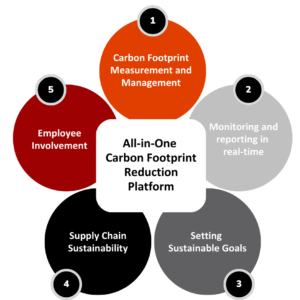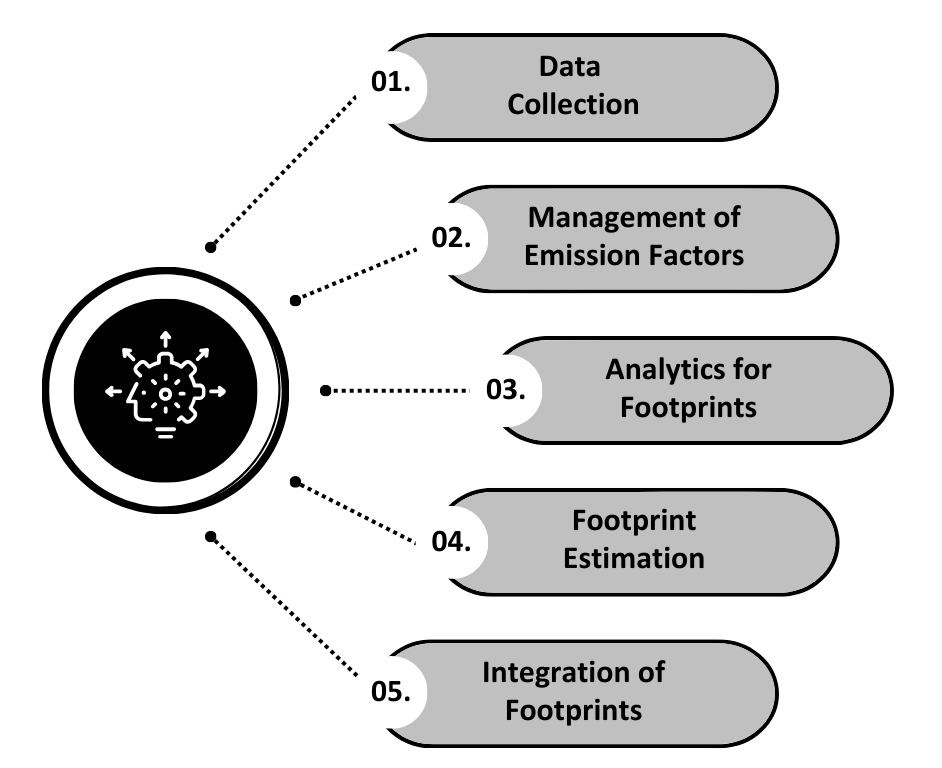What is SAP Product Footprint Management?

Introduction
Sustainability has emerged as a primary issue for today’s company executives. Addressing the critical issue of climate change requires precise and reliable carbon accounting. The prevalent technique relies heavily on obsolete spreadsheets and semi-automated technology, offering only a limited view of emissions. Upgrading to SAP Product Footprint Management helps improve accuracy and comprehensiveness in addressing climate change as part of company sustainability initiatives.

Why is Sustainability Important?
Before getting into the solution, In today’s world, sustainability has become an integral element of our daily life. What does this mean for businesses? As customers and employees expect a more sustainable way of conducting business, a growing number of organizations are searching for methods to minimize their carbon footprint. Companies that do not adapt will most likely encounter difficulties in the future. Whether your company is large, medium, or small, decreasing greenhouse gas emissions should be a top concern for everyone.
What is a carbon footprint?
When evaluating the environmental impact of any action, the carbon footprint has become the norm. It refers to the amount of carbon dioxide emitted into the atmosphere as a result of carrying out that activity.
Why is it important to reduce your carbon footprint?
Reducing a company’s carbon footprint means emitting less carbon emissions into the atmosphere, slowing climate change, protecting our environment, and making better use of the planet’s resources.
All-in-One Carbon Footprint Reduction Platform
All-in-one platforms, such as the one we’re discussing, provide businesses with a comprehensive set of tools and resources to help them get started on the path to sustainability. These platforms are intended to make the complicated process of lowering carbon footprints and minimizing environmental effects easier to understand. Let’s look at some of the main features and benefits:

Carbon Footprint Measurement and Management
One of these systems’ key purposes is to correctly quantify and manage an organization’s carbon footprint. This is accomplished by tracking emissions from various activities such as energy use, transportation, and garbage creation. Businesses can make informed choices about where and how to minimize their carbon emissions with thorough insights.
Monitoring and reporting in real time
It analyzes carbon emissions and other sustainability parameters in real time. The solution enables businesses to be proactive in managing their environmental performance, to respond rapidly to changes, and to provide reports for stakeholders and regulatory compliance.
Setting Sustainable Goals
Setting and monitoring sustainability objectives is crucial for development. These platforms give the tools needed to set high environmental goals, track progress towards them, and communicate accomplishments to internal and external stakeholders.
Supply Chain Sustainability
The supply chain accounts for a considerable amount of a company’s carbon footprint. This solution frequently incorporates capabilities for monitoring and improving suppliers’ sustainability performance. This collaborative approach extends the organization’s commitment to sustainability beyond its boundaries.
Employee Involvement
Employees have an important part in achieving sustainability. These platforms encourage employee engagement by making materials available for education, idea exchange, and participation in sustainable efforts. Employee engagement can be a driving force in lowering an organization’s carbon footprint.
The Solution:
As the importance of sustainability grows, SAP has enabled its whole product range, including supply chain software and human capital management, to gather and manage environmental data. In addition, the organization has created new technologies centered on sustainability.
SAP recently released SAP Product Footprint Management (SAP PFM) solution to assist industrial organizations in calculating and visualizing their footprint. The solution is a cloud-native application that estimates product footprints on a regular and large scale during the course of a product’s lifespan. Companies can utilize the solution to lower the carbon footprint of their activities.
Organizations across the world are at various stages of implementing sustainability measures and paying for emissions. SAP Product Footprint Management provides enterprises with insights into the environmental implications of their goods throughout their full lifespan. They can use these insights to improve products and processes, as well as for internal and external disclosure and reporting.
The technology repurposes current business data and combines it with environmental parameters to determine product footprints on a regular and scaled basis. The computed footprints are then included in the overall operations.
What is SAP Product Footprint Management?
SAP Product Footprint Management is a cloud application that runs on the SAP Business Technology Platform (BTP) that allows for the computation of product footprints on a regular and scalable basis across the full product life cycle, from cradle to grave. These footprints provide firms with information about the environmental effects of their products, which they can share with business partners and use to improve internal products and processes.
Key capabilities of SAP PFM
Sustainability is a challenge for the entire globe and, hence, for every single business. There can be no continuity, long-term profit, or expansion without a healthy earth. Supply chains account for one-fifth of global carbon emissions, implying an urgent need for action.
SAP PFM can determine footprints at every point along the value chain, including logistics, manufacturing, human resource management, technology development, and procurement. This service can assist businesses in reducing their environmental impact by analyzing data.

Data Collection
The system gathers master data from your operational business processes and SAP business applications, leveraging previously collected and verified data. Calculate the footprints for each of your goods using data from all of your company’s emissions and how they contribute to your final products.
Management of Emission Factors
SAP PFM uses emission factors derived from product life cycle assessment data to compute footprints at scale across the whole product inventory. For the time being, data is either retrieved from the SAP Life Cycle Assessment (LCA) database or reused from the LCA database’s contents. Ultimately, the idea is to rely on data obtained directly from vendors.
Analytics for Footprints
You can also examine the footprint findings for a certain state by using the fast filters offered as a drop-down list. Each position in the table is determined by the status of semantic colors assigned to specific footprint data to indicate their significance. To visualize the pain locations, the estimated footprints are incorporated back into the end-to-end procedures.
Footprint Estimation
You can decide which goods to include in the calculation by using a pre-configured footprint calculation template. This matches each product with its emission factor (both purchased and raw materials for manufacture), offering an overview of carbon emissions throughout a product’s lifespan. SAP PFM now has an integrated government carbon pricing computation for improved budgeting and planning.
Integration of Footprints
Because the computed footprints are linked to the core operations of SAP S/4HANA and SAP S/4HANA Cloud, the KPIs for sustainability improvement can be monitored and visualized. A focused control like this offers considerable resource savings as well as enhanced transparency.
Conclusion
SAP Sustainability Footprint Management emerges as a light of innovation in the ever-changing field of corporate responsibility, altering how firms handle carbon accounting and environmental impact assessment. A new era of transactional carbon accounting has begun with the strategic integration of SAP’s cutting-edge technology, the Environmental, Health, and Safety (EHS) Solution, and the ambitious Climate 21 programme.
KaarTech can offer professional guidance and assistance. Our team of professionals can guide you towards responsible business practices by embracing sustainability with SAP and designing a better future for your businesses.
FAQ’s
Why is sustainability important for firms in today’s world?
Sustainability is an inherent part of everyday life, and businesses must adapt to satisfy customer and employee expectations. Companies of all sizes must prioritize decreasing their carbon footprint in order to remain relevant and address future concerns.
What is a carbon footprint, and why is it important to reduce it?
A carbon footprint is a measure of how much carbon dioxide is emitted into the atmosphere as a result of certain actions. Reduced emissions are critical for slowing climate change, safeguarding the environment, and making better use of the planet’s resources.
How do all-in-one platforms help organizations reduce their carbon footprints?
All-in-one solutions provide complete capabilities for calculating, managing, and lowering a company’s carbon footprint. These systems simplify a complicated procedure by giving insights into emissions, real-time monitoring, goal setting, and supply chain sustainability.
How Does SAP Product Footprint Management Help Businesses?
SAP has launched a Product Footprint Management (SAP PFM) solution to help industrial organizations calculate and visualize their footprint. The solution is a cloud-based application that calculates product footprints on a frequent and massive scale during the length of a product’s life cycle. Companies can use this solution to reduce the carbon impact of their operations.
